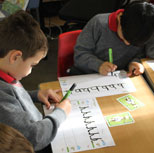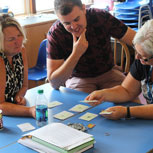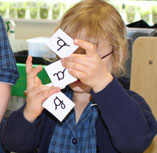Do All Schools Show the Same Rate of Progress?
Phase 4 Study Data:
Do all Schools Show the Same Rate of Progress?
Aim of the Study: Analysing the same data sample as Phase 3, the data was reviewed to see if there was any difference in the progress according to the school. The aim of this analysis was to look at whether there was a difference noted in the children’s progress depending on which school they were at.
Method: All children within two schools (Yateley Manor School and Hall Grove School) were asked to copy a prescribed pangram. Samples were taken every 6 weeks following a baseline sample. The samples were collated and then scored against the same 25-quality statement used in Phase 1 & 2, giving each child a total score of 25. The 25 statements were categorised into 5 subsections: legibility, size, script, reversals and spatial placement.
Sample: The children were matched for age and gender, and all schools participating were within the independent sector. Samples were taken from 216 children across both schools, 144 were boys and 72 were girls.
Findings: The final scores for all children were compared using Analysis of Covariance (ANCOVA) with fixed effects for school, gender and year. The data did not show any significant difference in the final scores between the different schools, the children in both schools made the same level of progress.
In Summary: The results show that the rate of progress in the quality of children’s handwriting is consistent between the two schools with no significant difference noted. Both of the schools participating in the sample collection received the direct teacher training and this may be a factor in the programme being delivered consistently in the schools.

|

















 offers all schools a lively engaging way of teaching handwriting
offers all schools a lively engaging way of teaching handwriting